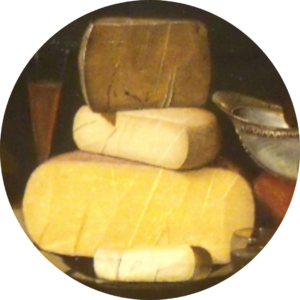Introduction to Alsace Gewurztraminer
Gewurztraminer is one of the most distinctive white wines from the Alsace region in northeastern France, near the border with Germany. This wine is famous for its aromatic complexity, with a flavor profile that can include lychee, rose petals, and spices. The Alsace region is known for its unique varietal wines, which are typically made from one type of grape—Gewurztraminer being a prime example.
Historical Background
- Origins: Gewurztraminer originated in the Alto Adige region of Italy but became prominent in Alsace during the Middle Ages.
- Cultural Influence: The grape gained popularity due to the region’s historical German influence, which appreciates aromatic and robust wines.
- Development: Over centuries, Gewurztraminer has become synonymous with Alsace’s winemaking identity, adapting well to the local climate and terroir.
Key Regions and Appellations
Alsace is divided into two main wine-producing areas, each with a focus on Gewurztraminer:
- Haut-Rhin: The southern part of Alsace, which includes the town of Colmar. This area is known for producing more refined and concentrated wines.
- Grand Cru sites: Include Gewurztraminer from prestigious vineyards like Kessler, Kitterlé, and Sporen, among others.
- Bas-Rhin: The northern part, generally producing slightly lighter styles of Gewurztraminer.
Characteristics of Gewurztraminer Grapes
- Appearance: The grape skin is pink to red, which gives the wine a deeper hue than most white wines.
- Flavor Profile: Intensely aromatic with notes of tropical fruits, flowers, and spices. Common descriptors include lychee, passion fruit, rose, and ginger.
- Sugar and Alcohol: Gewurztraminer often has a higher sugar content and alcohol level compared to other white wines, contributing to a fuller body and a richer texture.
Wine Making Techniques
- Vinification: Gewurztraminer is typically fermented in stainless steel to preserve its aromatic profile, though some producers use old oak barrels for added complexity.
- Style Variations: Ranges from dry to sweet, including Vendanges Tardives (late harvest) and Sélection de Grains Nobles (selection of noble berries affected by noble rot).
Presence and Perception in the USA
- Importation: Alsace Gewurztraminer was first imported into the United States in significant amounts during the late 20th century.
- Consumer Reception: Appreciated for its distinctiveness and often used as an alternative to more mainstream white wines like Chardonnay.
- Pairing and Usage: Popular in the U.S. for its compatibility with spicy and Asian cuisines, due to its sweet-spicy flavor profile.
Current Trends and Challenges
- Climate Change: Like many wine regions, Alsace faces challenges from climate change, which could impact the traditional expression of Gewurztraminer.
- Market Trends: There is a growing demand for wines with lower alcohol and sugar levels, which challenges the typical style of Gewurztraminer.
Conclusion
Alsace Gewurztraminer represents a critical element of the region’s winemaking identity, offering a unique combination of aroma, flavor, and richness that sets it apart from other white wines. Its acceptance and popularity in the U.S. reflect its global appeal and the continued interest in aromatic wines that pair well with a diverse range of cuisines. As consumer preferences evolve and environmental challenges arise, producers of Alsace Gewurztraminer will need to adapt while maintaining the distinctive qualities of this celebrated wine.
Here is a table of tasting notes for Alsace Gewurztraminer wine, covering various aspects from body to aging influences:
| Aspect | Description |
|---|---|
| Body | Full-bodied, with a rich, oily texture. |
| Acidity | Low to medium; Gewurztraminer typically has less acidity compared to other white wines. |
| Sweetness | Ranges from dry to sweet, including off-dry styles. Late harvest versions can be significantly sweet. |
| Tannins | Almost none; not a relevant factor for white wines like Gewurztraminer. |
| Alcohol | High; typically 13-15% due to the grape’s tendency to high natural sugar levels. |
| Grape Flavours | Dominant notes of lychee, rose petal, and tropical fruits like mango and pineapple. |
| Oak Flavouring | – Rarely used as it can overpower the grape’s natural aromatics. |
| – When used, typically older or neutral oak to add complexity without strong oak flavors. | |
| Malolactic Conversion | – Not commonly employed in traditional styles as it can soften the already low acidity. |
| – May be used selectively in richer, fuller-bodied styles to add creaminess. | |
| Lees Aging | – Commonly used to enhance texture and complexity. |
| – Can introduce subtle yeasty or bready notes. | |
| Flavours from Aging | – Develops more complex notes of honey, dried fruit, and spice over time. |
| – Older vintages might exhibit nutty characteristics and a mellowing of the vibrant fruit flavors. |
This table provides a detailed overview of Alsace Gewurztraminer, highlighting its sensory characteristics and the impact of various winemaking techniques. These wines are celebrated for their rich aromatics and versatility in sweetness levels, which make them quite distinctive among white wines.
Alsace Gewurztraminer is a versatile wine in terms of food pairing, especially due to its aromatic profile and range in sweetness. Here are some suggestions for pairing it with food and specifically with cheese, emphasizing local cheeses and dishes from the Alsace region.
Food Pairing with Alsace Gewurztraminer
- Spicy and Aromatic Dishes:
- Cuisine: Works beautifully with spicy Asian dishes, such as Thai or Indian curries, because the wine’s sweetness balances the heat.
- Flavors: Complements dishes with ginger, clove, and cinnamon, enhancing the aromatic spices in the wine.
- Rich and Creamy Dishes:
- Cuisine: Ideal with rich, creamy sauces over pasta or poultry, as the wine’s body stands up to the weight and the aromatic profile cuts through the creaminess.
- Dishes: Traditional Alsace dishes like “choucroute garnie” (a hearty dish featuring sauerkraut and various meats), where the wine’s acidity and sweetness can offset the fattiness and tang of the sauerkraut.
- Smoked and Grilled Foods:
- Preparation: The intensity of Gewurztraminer can complement smoked or grilled meats and fish.
- Dishes: Pairs well with smoked salmon, which echoes the wine’s richness and stands up to its bold flavors.
Cheese Pairing with Alsace Gewurztraminer
Alsace Gewurztraminer pairs particularly well with a variety of cheeses, including local Alsace and nearby regional varieties:
- Munster:
- Description: A strong-smelling, soft cheese with a washed rind, produced in the Vosges mountains in Alsace.
- Pairing: The wine’s floral and spicy notes contrast beautifully with the creamy, robust flavors of Munster, balancing its intensity.
- Bergkäse:
- Description: A hard, aged cheese similar to Gruyère, made in nearby regions.
- Pairing: The nutty and slightly sweet flavors of the cheese complement the wine’s tropical and spicy notes.
- Comté:
- Description: Aged, hard cheese from the Jura region, not far from Alsace.
- Pairing: The rich, fruity elements and the complexity of aged Comté can match the body and depth of Gewurztraminer.
Local Dishes and Alsace Gewurztraminer
Alsace Gewurztraminer also pairs wonderfully with specific local dishes:
- Tarte flambée (Flammekueche): A thin-crust pizza topped with crème fraîche, onions, and bacon. The wine’s fruity and spicy profile pairs well with the creamy and smoky flavors.
- Foie gras: The lushness of foie gras is beautifully offset by the aromatic intensity and slight sweetness of Gewurztraminer, making for a luxurious pairing.
Overall, Alsace Gewurztraminer’s ability to pair with a range of dishes from spicy to rich and creamy, as well as with strong cheeses, makes it a versatile choice for diverse culinary experiences. Its aromatic complexity enables it to complement and enhance a wide variety of flavors, particularly those prevalent in Alsace’s rich culinary tradition.
Alsace Gewurztraminer is renowned for its distinctive style, which varies significantly from interpretations of the same grape in other regions both locally within France, nationally, and internationally. Here’s how the taste of Alsace Gewurztraminer compares:
Local Variations within France
- Alsace Gewurztraminer:
- Characterized by its richly aromatic nature, with intense flavors of lychee, roses, and spices. It often has a fuller body and a noticeable sweetness, although dry versions exist. The cool climate of Alsace allows for a slow, extended ripening period, enhancing the aromatic compounds in the grapes.
- The wines from Alsace typically exhibit higher complexity and a balance of sweetness with acidity, making them quite opulent yet balanced.
National Variations in France
- Other French Regions:
- It’s rare to find Gewurztraminer being cultivated extensively outside of Alsace in France. The few exceptions might include cooler areas in the Loire Valley or Lorraine, where the style, if produced, would typically be lighter and less expressive due to different climatic influences and less focus on this particular variety.
International Interpretations
- Germany (Often labeled as Gewürztraminer in Pfalz, Rheinhessen):
- German Gewürztraminers are generally less intense than their Alsatian counterparts, with more restraint and sometimes higher acidity, reflecting the cooler growing conditions. They are often drier and exhibit more subtle flavors of fruit and spice.
- Italy (Alto Adige/Südtirol):
- Here, Gewurztraminer often showcases a more mineral-driven profile with a robust structure. These wines can present a lighter body compared to Alsace and often maintain a good balance between acidity and aromatic intensity, with apple and stone fruit being more prominent than the tropical notes of Alsace versions.
- New Zealand:
- In cooler regions like Marlborough, Gewurztraminer can develop vibrant fruit flavors with a pronounced aromatic profile similar to Alsace but typically with higher acidity and fresher fruit flavors, such as grapefruit and lime, adding a different dimension to the wine.
- USA (California, Washington State):
- American Gewurztraminers, especially from areas like Monterey and the Columbia Valley, tend to have a fruit-forward style with a pronounced sweetness and lower acidity. These wines are more approachable in their youth, with lush fruit flavors dominating and less of the spicy and floral subtleties found in Alsace.
- Australia (Victoria, Tasmania):
- Australian versions of Gewurztraminer are often very fruit-forward and designed for earlier drinking, with an emphasis on fresh pear, apple, and citrus notes, typically less complex than those from Alsace but enjoyable in their light and crisp style.
Summary
Alsace remains the benchmark for Gewurztraminer production, with a unique expression that is hard to replicate due to its ideal terroir and historical expertise in handling the grape. Other regions produce stylistically different wines that reflect local climate, winemaking traditions, and consumer preferences. Each offers a unique take on Gewurztraminer, ranging from the mineral and subtle Italian versions to the bold and fruity interpretations in New Zealand and the USA, showcasing the versatility and global appeal of this aromatic grape variety.


